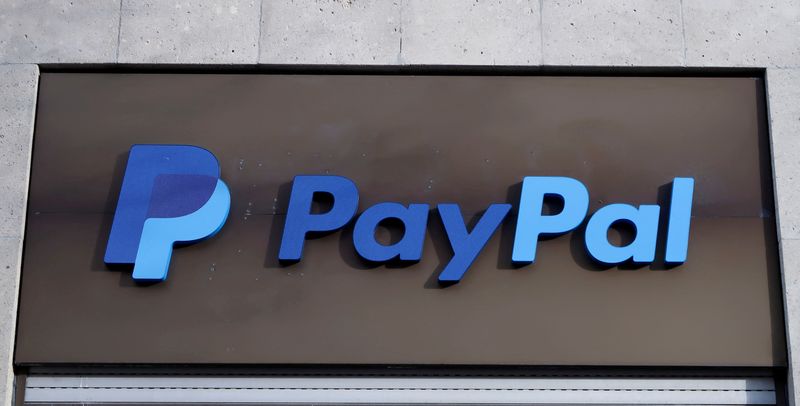
© Reuters. FILE PHOTO: The PayPal logo is seen at an office building in Berlin, Germany, March 5, 2019. REUTERS/Fabrizio Bensch/File Photo
IXIC
+1.04%
Add to/Remove from Watchlist
Add to Watchlist
Add Position
Position added successfully to:
Please name your holdings portfolio
Type:
BUY
SELL
Date:
Amount:
Price
Point Value:
Leverage:
1:1
1:10
1:25
1:50
1:100
1:200
1:400
1:500
1:1000
Commission:
Create New Watchlist
Create
Create a new holdings portfolio
Add
Create
+ Add another position
Close
PYPL
-3.83%
Add to/Remove from Watchlist
Add to Watchlist
Add Position
Position added successfully to:
Please name your holdings portfolio
Type:
BUY
SELL
Date:
Amount:
Price
Point Value:
Leverage:
1:1
1:10
1:25
1:50
1:100
1:200
1:400
1:500
1:1000
Commission:
Create New Watchlist
Create
Create a new holdings portfolio
Add
Create
+ Add another position
Close
(Reuters) – PayPal (NASDAQ:PYPL) Holdings’ stock slumped 12% on Tuesday, on track for its lowest close in almost six years, after the payments company cut the outlook for its annual adjusted operating margin.
The stock, last trading at $66.45, was set to record its lowest closing price since October 2017. It touched a session low of $66.39, its lowest intra-day price since December.
PayPal late on Monday estimated adjusted operating margin expansion of 100 basis points this year, compared with its earlier forecast of 125-basis-point growth.
The company is focusing on enterprise-focused unbranded checkouts, which are less profitable than its own branded checkout button.
High inflation, rising interest rates and worries about a slowing economy have also discouraged consumer spending on big-ticket items.
Affirm Holdings’ shares jumped 4.4% on Tuesday ahead of the “buy now, pay later” platform’s quarterly report after the bell, which could offer additional clues about the health of online spending.
PayPal said in January it was cutting 7% of its workforce, or about 2,000 employees, joining several technology companies that have eliminated thousands of jobs this year.
Its stock has fallen 7% in 2023, compared to a 17% rise in the Nasdaq Composite Index.
Source: Investing.com




























